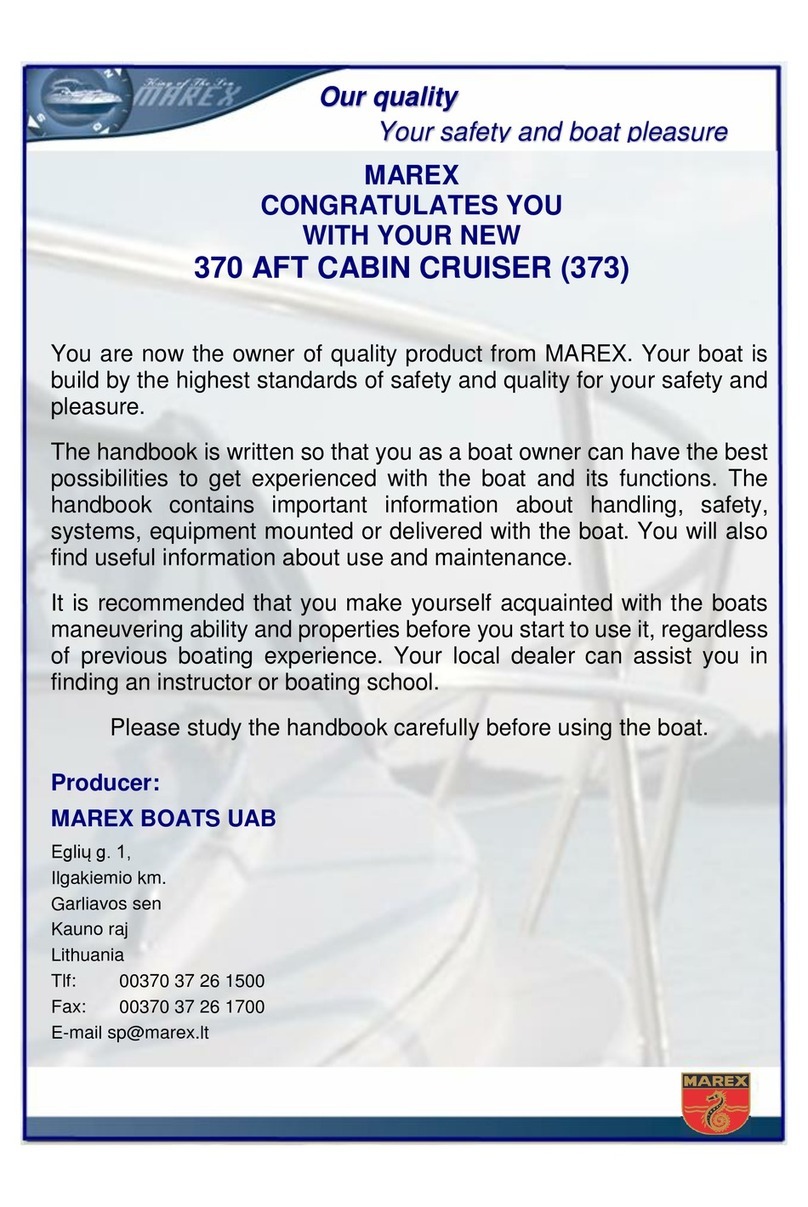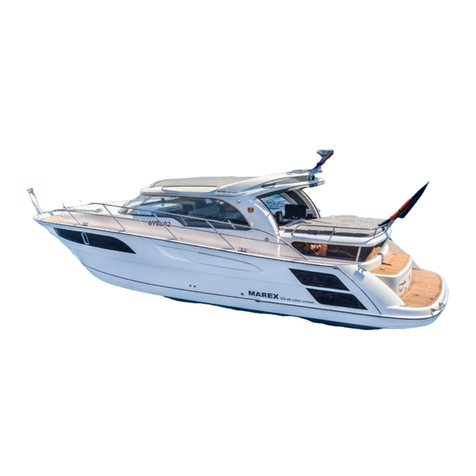MAREX 375
2
by Nikl Design USER MANUAL
4.2.1 DRAWINGS OF THE TECHNICAL SYSTEMS......................................................................28
4.2.2 PICTURES AND DESCRIPTION OF INSTALLED COMPONENTS......................................29
4.3 FUEL SYSTEM ..............................................................................................................................29
4.4 DRAINING SYSTEM......................................................................................................................31
4.5 LENSING SYSTEM........................................................................................................................32
4.5.1 MANUAL LENSING SYSTEM ................................................................................................32
4.5.2 AUTOMATIC LENSING SYSTEM..........................................................................................32
4.6 FRESH WATER SYSTEM.............................................................................................................34
4.7 SEPTIC SYSTEM/BLACK WATER SYSTEM................................................................................36
4.8 ELECTRIC SYSTEM......................................................................................................................39
4.9 EXHAUST SYSTEM ......................................................................................................................41
4.10 VENTILATION SYSTEM FOR THE ENGINE..............................................................................42
4.11 FIRE EXTINGUISHING SYSTEM................................................................................................42
5.0 OPERATION .........................................................................................................44
5.1 STARTING OF THE ENGINE........................................................................................................44
5.2 BATTERIES (LEAD ACCUMULATORS).......................................................................................45
5.3 FUSE PANEL & CONNECTION SCHEMES .................................................................................47
5.4 MAIN SWITCH PANEL ..................................................................................................................47
5.5 WINDSCREEN WIPERS ...............................................................................................................48
5.6 DASHBOARD INSTRUMENTS INSTALLATION ACCESS...........................................................48
5.7 ELECTRIC SYSTEM......................................................................................................................49
5.8 SEPTIC SYSTEM ..........................................................................................................................52
5.9 OPERATING OTHER EQUIPMENT..............................................................................................55
5.9.1 COOKER AND OVEN ............................................................................................................55
5.9.2 DEFROSTER..........................................................................................................................55
5.9.3 DIESEL HEATER....................................................................................................................56
5.10 MANOEUVRING OF THE BOAT.................................................................................................57
5.11 HINTS AND ADVICES.................................................................................................................60
5.11.1 LIFTING AND STORAGE IN A “CRADLE”...........................................................................60
5.11.2 BOAT TRANSPORT.............................................................................................................61
5.11.3 BOAT MOORING..................................................................................................................61
5.11.4 BOAT ANCHORING.............................................................................................................62
5.11.5 TOWING AND BEING TOWED............................................................................................62
6.0 PERIODIC MAINTENANCE..................................................................................63
6.1 MAINTENANCE OF THE HULL.....................................................................................................63
6.1.1 BEFORE PLACING THE BOAT ON WATER.........................................................................63
6.1.2 BEFORE WINTER STORAGE...............................................................................................63





























